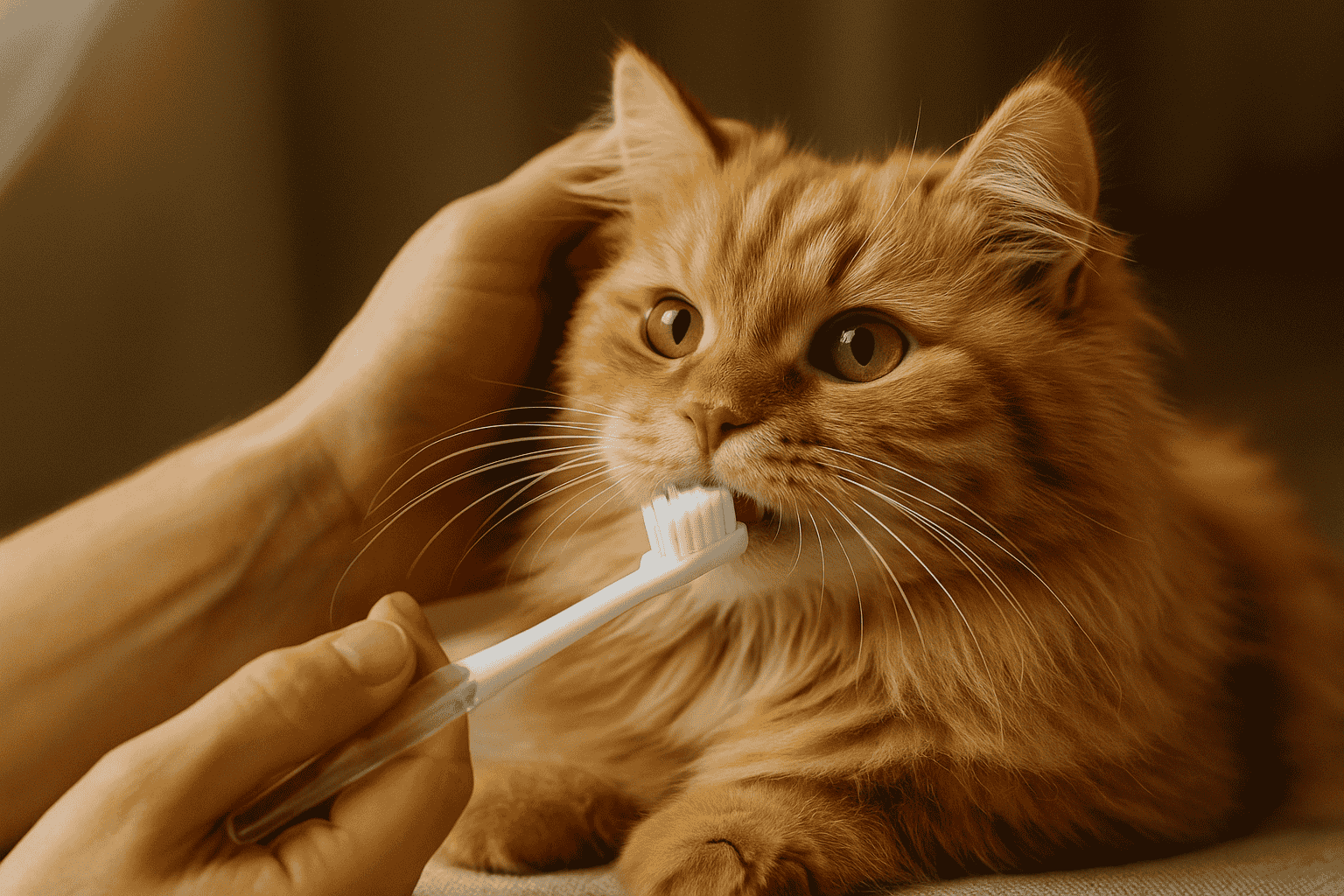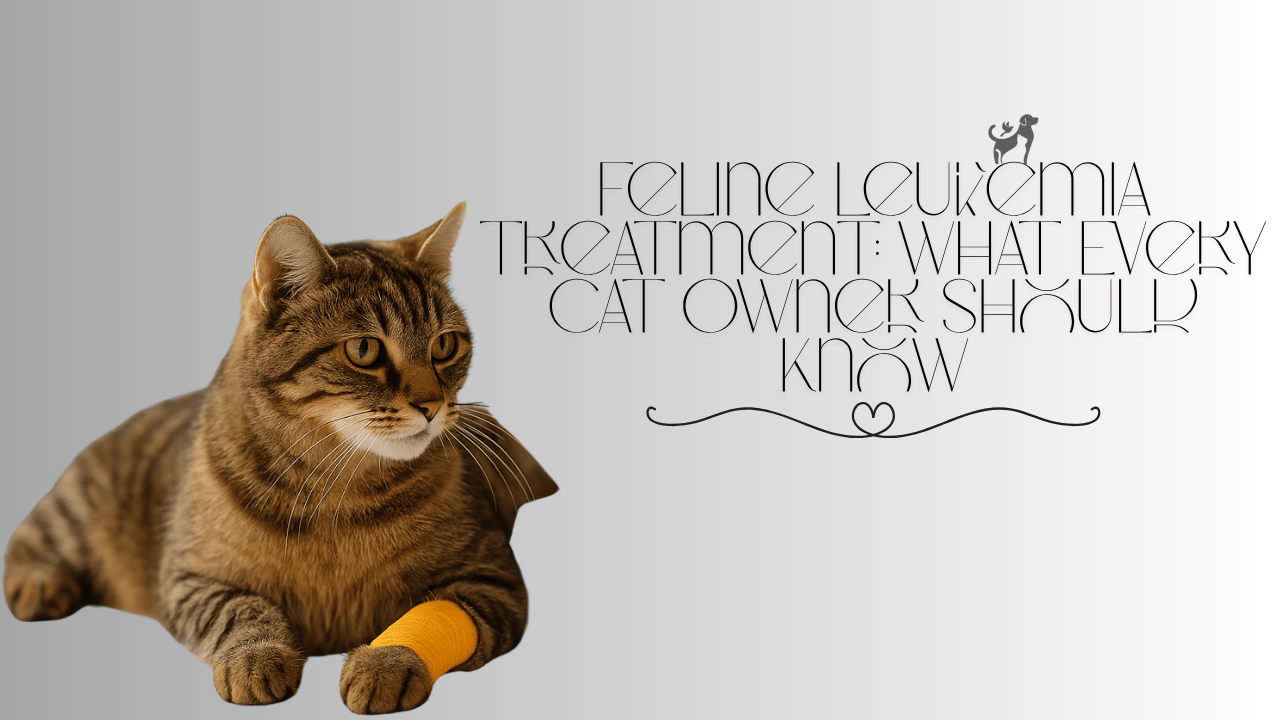Oral hygiene isn’t just for humans. Dental disease affects over 70% of cats by age three, yet many pet parents still wonder how to brush a cat’s teeth correctly. If you’ve tried and failed—or never even attempted it—you’re not alone. Cats are independent creatures with strong opinions, especially about anyone putting a brush in their mouth.

Brushing your cat’s teeth:
- Prevents plaque and tartar buildup
- Reduces bad breath
- Protects against gum disease
- May help prevent heart, kidney, or liver problems caused by oral bacteria
Think of brushing as an investment in your cat’s long-term health.
When to Start Brushing Your Cat’s Teeth
The earlier, the better. Starting as a kitten helps normalize the experience, but adult cats can still learn to tolerate (and sometimes enjoy!) brushing with enough patience.
Signs it’s time to start:
- Your cat has bad breath
- You see yellow/brown buildup on teeth
- Your vet recommends dental care
Even if your cat is older, it’s never too late to try.
What You’ll Need
Before diving in, gather these essentials:
Cat-Safe Toothbrush
- Finger brushes or small-headed soft-bristle brushes work well.
- Never use human toothbrushes — they’re too big and harsh.
Cat Toothpaste
- Use only enzymatic toothpaste made for cats.
- Flavors like poultry or tuna are usually a hit.
- Do NOT use human toothpaste — it contains ingredients that are toxic to cats.
A Calm Environment
- Choose a quiet space without distractions.
- Try brushing after playtime or a meal when your cat is relaxed.
Step-by-Step Guide to Brushing Your Cat’s Teeth
Brushing a cat’s teeth isn’t exactly like brushing a toddler’s, but it’s close — you’ll need patience, practice, and positive vibes.
Step 1: Get Your Cat Comfortable with Mouth Touching
- Start by gently lifting your cat’s lips for a few seconds each day.
- Offer treats or praise afterward.
- Do this for a few days to build trust.
2: Introduce the Toothpaste
- Let your cat sniff and lick a bit off your finger.
- Most cats love the taste (mine goes wild for tuna flavor).
- Reward again!
3: Introduce the Toothbrush
- Rub the toothpaste on the toothbrush and let your cat explore it.
- Don’t rush — just let them investigate.
4: Begin Brushing — Gently!
- Lift the lip and brush the outer surfaces of the teeth.
- Focus on the back molars, where plaque tends to build.
- Use small circular motions — no need to pry open the mouth.
- Keep sessions short: 30 seconds is great for beginners.
5: Praise and Reward
- Always follow with a treat, chin scratch, or playtime.
- End on a positive note, even if the session didn’t go perfectly.
Tips to Make Brushing Easier
- Routine is key: Try brushing at the same time daily.
- Use positive reinforcement: Treats, toys, or brushing before meals work wonders.
- Stay calm: If you’re anxious, your cat will sense it.
- Avoid force: Never pin your cat down. It creates stress and makes future sessions harder.
- Use a towel wrap (if needed): Gently swaddling your cat can prevent flailing without stress.
What If My Cat Hates It?
Let’s be honest — some cats act like brushing is pure betrayal. If your cat resists:
- Take a break and go back to just touching the lips/mouth.
- Switch toothpaste flavors.
- Try using your finger with toothpaste instead of a brush.
- Don’t give up after one or two tries — many cats need weeks to adjust.
Alternatives to Brushing
While brushing is the gold standard, other options can support dental health:
- Dental wipes: Less invasive, though not as effective as brushing.
- Dental treats: Look for VOHC-approved options (like Greenies for cats).
- Water additives: Added to drinking water to reduce oral bacteria.
- Professional cleanings: Ask your vet about annual dental cleanings under anesthesia.
According to PetMD, combining brushing with dental treats offers the best protection short of a full vet cleaning.
Real Owner Experience: Brushing Luna’s Teeth
When I first tried brushing my cat Luna’s teeth, it was a disaster.
She hissed, bolted under the couch, and gave me the cold shoulder for hours.
So I started slow:
- Week 1: Just lifting her lips while she sat in my lap
- Week 2: Introducing toothpaste as a “treat”
- Week 3: Brushing two front teeth — barely
It took a full month, but now? Luna lets me brush without fuss — especially if I give her a freeze-dried salmon treat after.
Moral of the story? Stick with it. Your cat’s health is worth it.
FAQs
1. How often should I brush my cat’s teeth?
Ideally, daily brushing is best. But even 2–3 times per week can significantly reduce plaque and tartar.
2. Is it too late to start brushing my senior cat’s teeth?
Nope! It might take more patience, but senior cats benefit hugely from better oral health. Just get vet approval first.
3. Can I use baking soda to brush my cat’s teeth?
No — baking soda is not safe for cats and can upset their stomach if swallowed.
4. My cat has bad breath. Is that normal?
Mild odor is okay, but strong or sour-smelling breath could signal gum disease. Talk to your vet.
5. Do I need to brush the inside of the teeth too?
Not necessarily. Focus on the outer surfaces, where most plaque forms. Inside brushing is optional and often not tolerated.
Final Thoughts
Brushing your cat’s teeth might feel intimidating, but with patience and practice, it becomes a bonding ritual — and a health booster.
Your cat depends on you for dental care. And a little brushing goes a long way in preventing costly vet bills and painful diseases.
Share this article with other cat parents — and check out more practical pet care tips at Fluffze.com!
Author Box
Written by Jessica Hart, pet lover & contributor at Fluffze
Jessica is a lifelong cat mom who’s helped dozens of pet parents create healthier routines for their furry companions. She shares real-world, science-backed advice to make pet care easier for everyone.
Related Articles:
Smart Cat Dental Care at Home: Keep Your Cat’s Smile Healthy
How to Clean a Cat’s Ears Safely at Home
Persian vs Maine Coon: Which Cat Breed Is Right for You?
The Best Homemade Cat Food for Sensitive Stomach
British Shorthair Health Issues Explained





